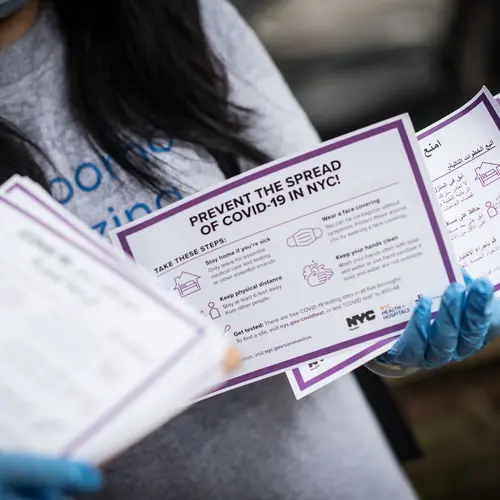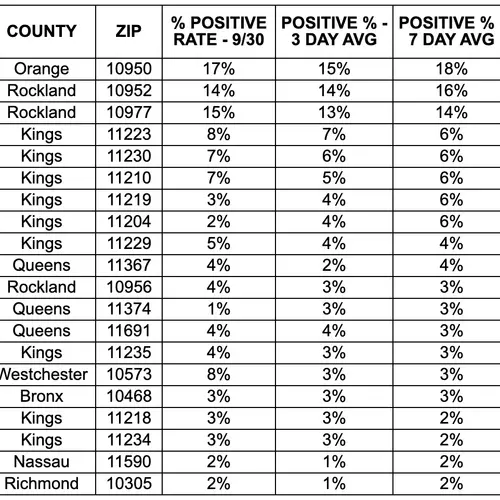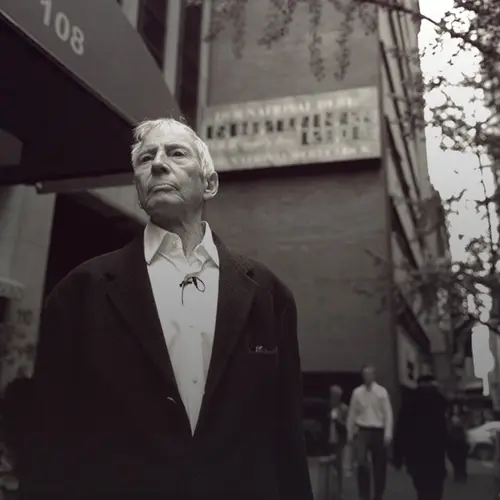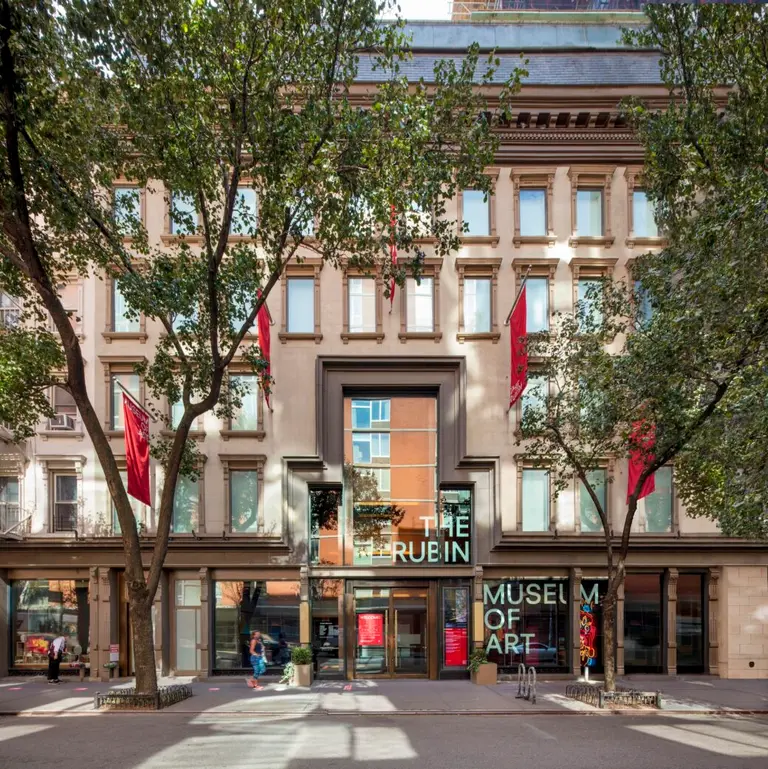Here are the New York zip codes with COVID clusters
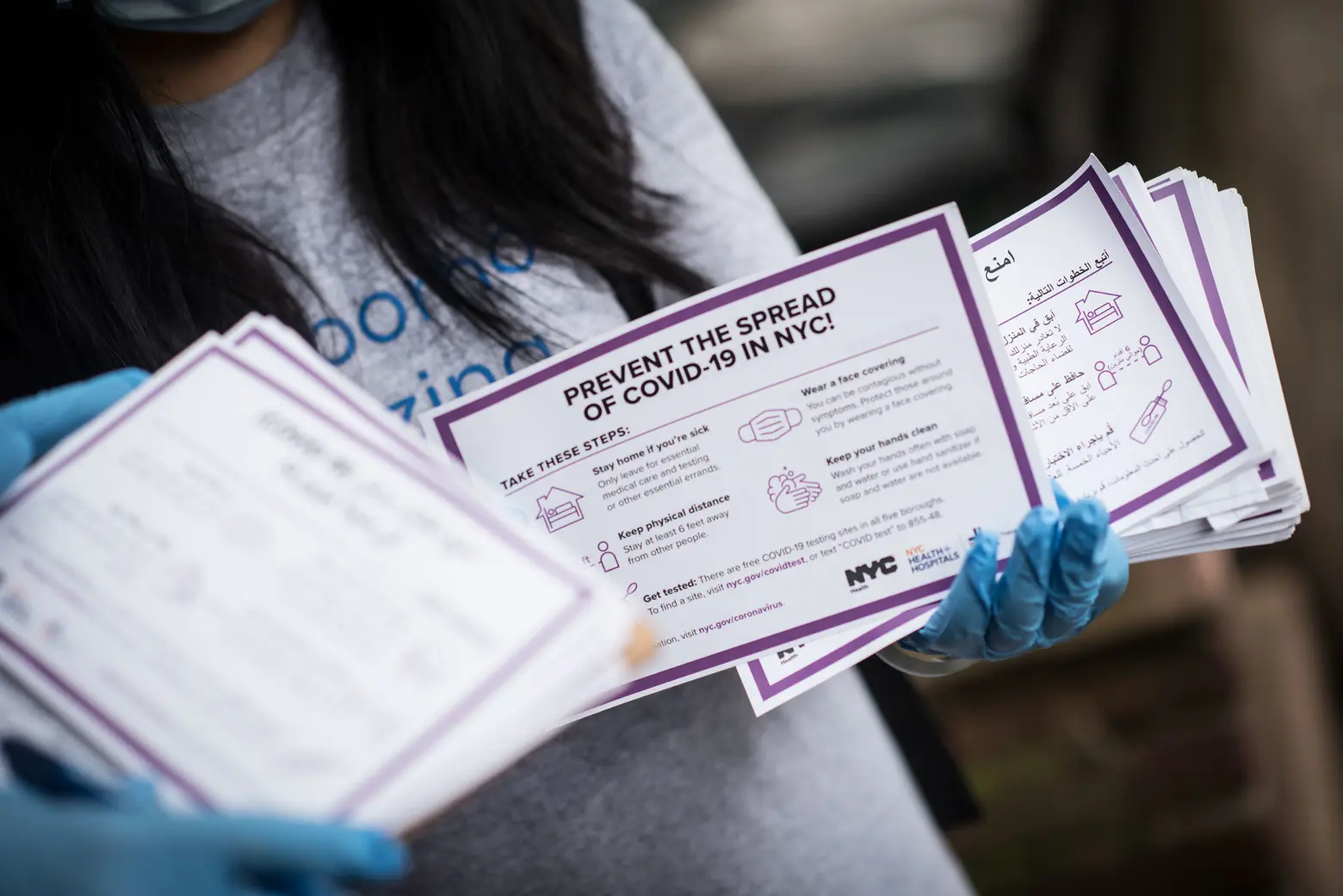
COVID outreach in August in Sunset Park, Brooklyn after a spike there. Photo by Michael Appleton/Mayoral Photography Office
This week, New York has been closely monitoring a group of 20 COVID hotspots, where as of today, the infection rate has increased from 5.5 to 6.5 percent. Of the top 10 zip codes statewide, six are in Brooklyn with seven-day-average infection rates of 6 and 4 percent, and one is in Queens with a 4 percent infection rate. In Orange County, one zip code has a staggering seven-day infection rate of 18 percent, while two Rockland County zip codes are at 16 and 14 percent. To deal with the issue, the state has employed 200 rapid testing machines to these zip codes.
Here is the zip code breakdown as of October 1, 2020:
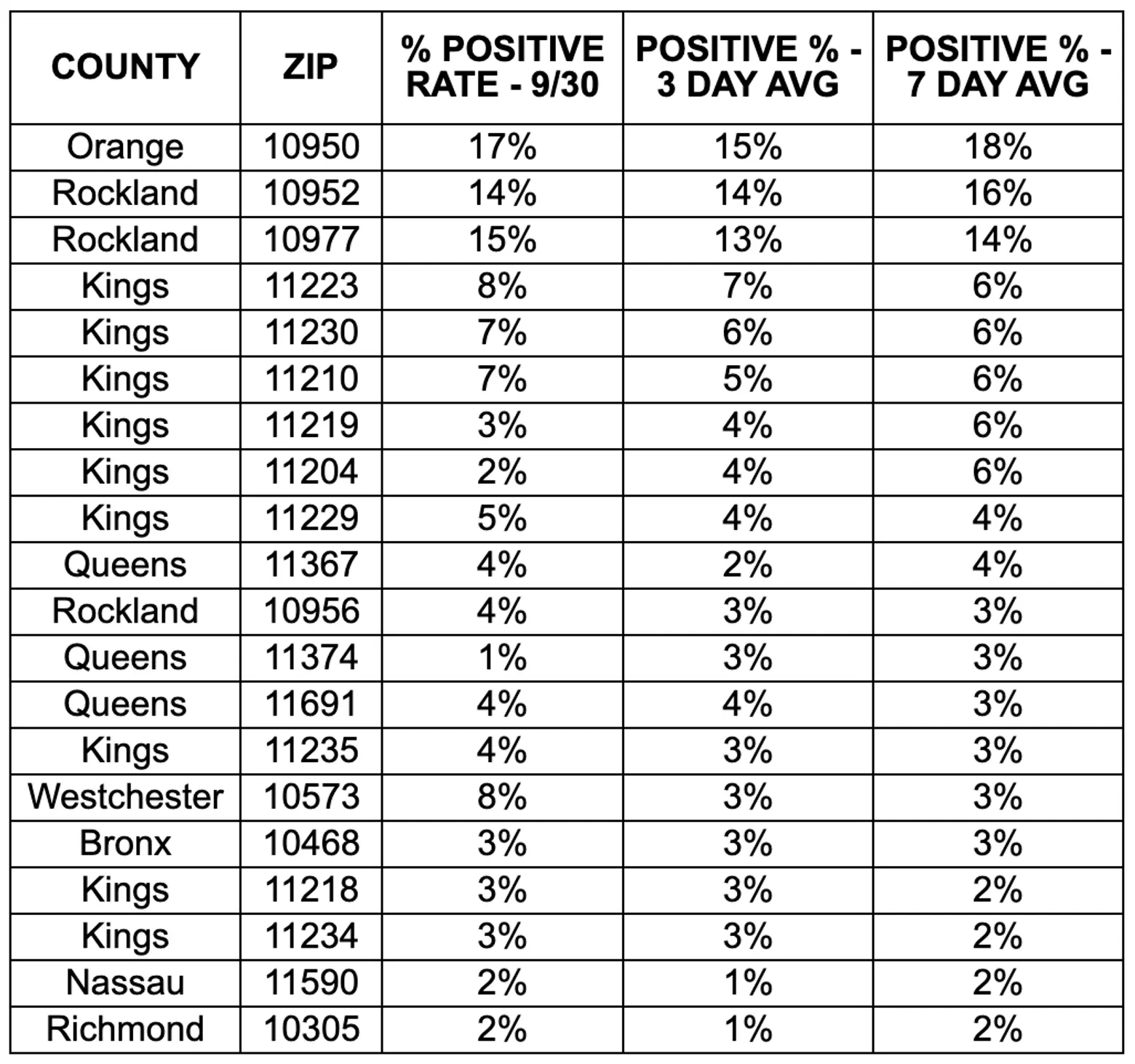
Chart via Office of the Governor
In Brooklyn, the neighborhoods with the highest infection rates are Gravesend, Midwood, East Midwood, Borough Park, Bensonhurst, and Sheepshead Bay, respectively, where clusters were first identified last week. In Queens, the zip code corresponds with Kew Gardens, also first identified last week.
In total, there are 1,769 zip codes in New York. Statewide, if you omit the clusters, the infection rate is .98 percent. On September 30, the state performed 109,218 tests, and 1,382, or 1.27 percent, were positive. The 20 most problematic zip codes have a combined infection rate of 6.5 percent, up from 5.5 percent in previous days. These top-20 zip codes make up 6 percent of the state’s population and 26 percent of all the state’s positive cases.
In a press conference today, the governor said, “It’s no longer about public education, it’s about enforcement — I don’t think there has been a public health topic that has been more exhaustively communicated in my lifetime than wearing a mask.”
Recent news has shone a light on the growing number of social gatherings and subsequent rise in cases in Orthodox Jewish communities. As the New York Times reported today, in New York City “officials are particularly concerned about eight neighborhoods in Brooklyn and Queens, some with large Orthodox Jewish communities, that have accounted for about one-fourth of New York City’s new cases in the past two weeks, despite representing about 7 percent of the city’s population.” These clusters have emerged during the high holy days of Rosh Hashana and ahead of Yom Kippur, which typically include large religious gatherings.
The rapid testing machines that were sent out earlier this week can perform four tests per hour and have a turnaround time of 15 minutes. The governor encouraged schools within these zip codes to request a machine and begin testing their students.
Editor’s Note: This story was originally published on September 28, 2020, and has been updated with new data.
